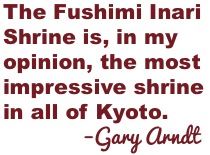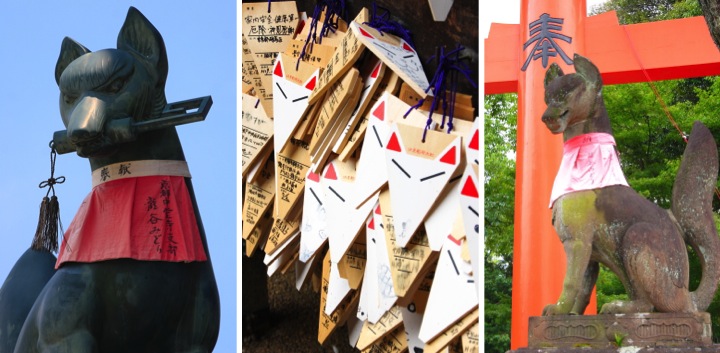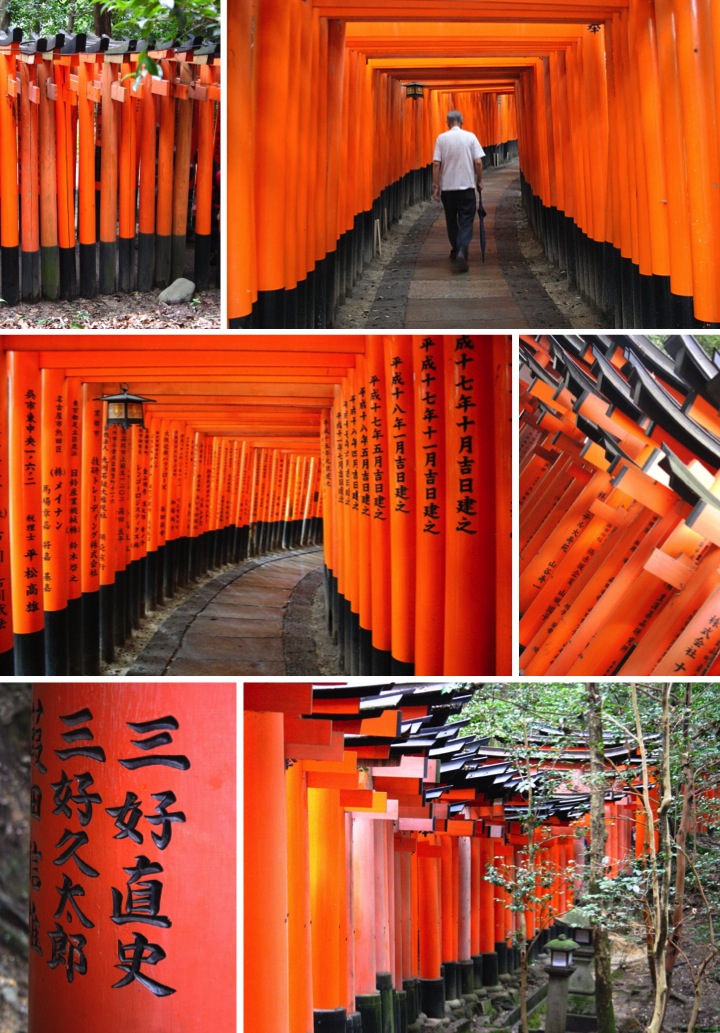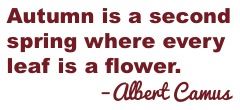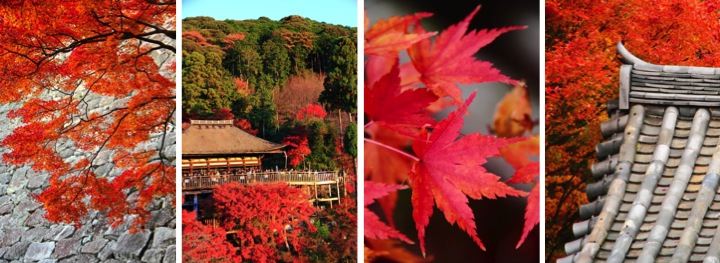Kinkaku-ji
The image of gold clad Kinkaku-ji reflected in the waters of Kyoko-chi is one of the most recognizable in Japan so I thought it would be a great place to take my friend from work, Cassie, on her first trip to Japan while we were in Kyoto a month ago. I actually visited Kinkaku- ji on my very first trip to Japan and thought it would be fun to visit again over seven years later.
After the third Shogun of the Ashikaga Shogunate, Ashikaga Yoshimitsu (足利 義満), abdicated to his son he purchased the site from the Saionji family in 1397 to build his retirement villa which he called Kitayama-den. Kitayama-den was converted into a Zen Buddhist temple of the Rinzai sect upon Yoshimitsu's death in 1408 per his wishes. The official name of the temple is Rokuon-ji (鹿苑寺, Deer Garden Temple) after Yoshimitsu's posthumous name, Rokuon-in-den, however the gold pavilion became so famous that it is more popularly known as Kinkaku-ji (金閣寺, Temple of the Gold Pavillion).
Although the rest of the buildings in Ashikaga Yomitsu's complex were destroyed through war and fire, the golden pavilion stood the test of time until 1950 when it was burnt down by Hayashi Yoken, a 22 year old monk. The current pavilion was built in 1955 as a replica of the original and was restored with thicker gold leaf in the late eighties. In 1994 it was registered as a World Heritage Site.
Kinkaku-ji was our first stop of the day in Kyoto and as Cassie and I walked through the entrace gate we could see the first initial signs that the some of the leaves were just beginning to turn color.
The disc shaped end cap tiles, called gatou, on this building near the entry displayed the 5-7-5 leaf paulownia kamon (家紋, crest). Emperor Godaigo conferred this crest on the Ashikaga family in the 13th century during the Ashikaga Shogonate. In modern times this kamon, known in Japanese as go-shichi-no-kiri, is used by the Office of the Prime Minister of Japan and is a symbol of the Japanese government.
Soon we approched the lovely golden pavillion which serves as a shari-den (舎利殿, reliquary hall) to enshrine relics of the Buddha. During Ashikaga Yomitsu's time the pavilion served as a guest house where he met with foreign dignitaries and Japanese aristocracy.
Each of its three floors of the pavilion are designed in a different architectural style. The first floor, Hosui-in (The Chamber of Dharma Waters, 法水院), was built in the Shinden style used for palaces in the Heian period. With white plaster and unpainted wood it is the only floor not covered in gold leaf.
The second floor, Cho-on-do (The Tower of Sound Waves, 潮音洞), was built in the Buke style of samurai houses.
The top floor, Kukkyo-cho (Firmament Top, 空竟頂), was built in a Zen temple style with beautiful bell shaped windows. The tiled roof is topped with a bronze statue of a phoenix leafed in gold.
Set within Kyoko-chi (鏡湖, Mirror Pond) are several beautiful islands with pine trees.
These Jizo Buddha statues in the temple's garden are a popular place to toss coins for good luck.
Built during the Edo period the Sekkaitei (夕佳亭, Place of Evening Beauty) tea house is perched on a hill with a lovely view of the golden pavilion and is currently the oldest building on the temple grounds. Inside features a famous pillar made from nandina wood.
After seeing Sekkatei Cassie and I stopped in the visitor's tea house so that she could try matcha for the first time. Matcha is finely milled green tea that is used for Japanese tea ceremonies. Because of matcha's bitter taste it is traditionally served with a wagashi sweet which you eat prior to drinking the tea.
Our last stop before leaving the grounds was to visit Fudo-do (不動堂). The small shrine houses a stone statue of the Buddhist deity Fudo-myo-o. Although it is normally not on public display the statue can be seen during Setsubun in early February and on August 16.
Kinkaku-ji is a truly beautiful spot and definitely a great place to visit while in Kyoto. Located in northern Kyoto you can get to Kinkaku-ji by taking the 101 or 205 bus from JR Kyoto Station and getting off at the Kinkaku-ji machi stop. From the bus stop it is a three minute walk marked by signs. Kinkaku-ji is open from 9 am until 5 pm every day with a 400 yen cost of admission for adults and 300 yen for children.
 Thursday, October 31, 2013 at 7:42AM | Posted by
Thursday, October 31, 2013 at 7:42AM | Posted by  Lisa |
Lisa |  5 Comments | |
5 Comments | |  Email Article |
Email Article |  Print Article
Print Article 

